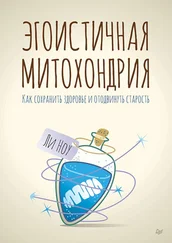Valenti, G. ‘Neuroendocrine Hypothesis of Ageing: The Role of Corticoadrenal Steroids.’ J Endocrinol Invest (2004): 27: 62–63.
Morales, A. J. ‘Effects of Replacement Dose of Dehydroepiandrosterone in Men and Women of Advancing Age.’ J Clin Endocrinol Metab (1994): 1360–1367. Bloch, M. et al. ‘Dehydroepiandrosterone Treatment of Midlife Dysthymia.’ Biol Psychiatry (1999): 45: 1533–1541.
Wolkowitz, O. M. et al. ‘Double-blind Treatment of Major Depression with Dehydroepiandrosterone.’ Am J Psychiatry (1999): 156 (4): 646–649. Schmidt, P. et al. ‘Dehydroepiandrosterone Monotherapy in Midlife-Onset Major and Minor Depression.’ Arch Gen Psychiatry (2005): 62: 154–162.
Reiter, W. J. et al. ‘DHEA in the Treatment of Erectile Dysfunction. A Prospective, Double-blind, Randomized, Placebo Controlled Study.’ Urology (1999): 53: 590–594.
Barrett-Connor, E. et al. ‘Endogenous Levels of Dehydroepiandrosterone Sulfate, But Not Other Sex Hormones, are Associated with Depressed Mood in Older Women: the Rancho Bernardo Study.’ J Am Geriatr Soc (1999): 47: 685–691.
Bastianetto, S. et al. ‘Dehydroepiandrosterone (DHEA) Protects Hippocampal Cells from Oxidative Stress-induced Damage.’ Mol Brain Res (1999): 66: 35–41.
Alhaj, H. A. et al. ‘Effects of DHEA Administration on Episodic Memory, Cortisol and Mood in Healthy Young Men: A Double-blind, Placebo-controlled Study.’ Psychopharmacology (2006): 188: 541–551.
Roth, G. et al: ‘Global and National Cardiovascular Disease Prevalence, Mortality, and Disability-Adjusted Life-Years for 1 °Causes, 1990 to 2015.’ J Am Coll Cardiol (May 2017).
Feldman, H. et al. ‘Low Dehydroepiandrosterone Sulfate and Heart Disease in Middle-Aged Men: Cross-Sectional Results from the Massachusetts Male Aging Study.’ AEP (1998): 8217–8228.
Fukui, M. et al. ‘Serum Dehydroepiandrosterone Sulfate Concentration and Carotid Atherosclerosis in Men with Type-2 Diabetes.’ Atherosclerosis (2005): 181: 339–344.
Yoshida, S. et al. ‘Dehydroepiandrosterone Sulfate is Inversely Associated with Sex-Dependent Diverse Carotid Atherosclerosis Regardless of Endothelial Function.’ Atherosclerosis (2010): 212: 310–315.
Okamoto, K. ‘Relationship Between Dehydroepiandrosterone Sulfate and Serum Lipid Levels in Japanese Men.’ J Epidemiol (1996): 6: 63–67.
Nestler, J. et al. ‘Dehydroepiandrosterone Reduces Serum Low Density Lipoprotein Levels and Body Fat but Does not Alter Insulin Sensitivity in Normal Men.’ J Clin Endocrinol Metab (1988): 66: 57–61.
Jimenez, M. et al. ‘Low Dehydroepiandrosterone Sulphate is Associated with Increased Risk of Ischemic Stroke Among Women.’ Stroke (2013): 44. URL: https://www.ncbi.nlm.nih.gov/pmc/articles/PMC3811081/.
Fulop, T. et al. ‘Relationship Between the Response to Influenza Vaccination and the Nutritional Status in Institutionalized Elderly Subjects.’ J Gerontol Biol Sci (1999): 54: M59–64.
Khorram, O. et al. ‘Activation of Immune Function by Dehydroepiandrosterone (DHEA) in Age-advanced Men.’ J Gerontol A Biol Sci Med Sci (1997): 52 (1): M1–7.
Goh, J. et al. ‘Exposure To Harmful Workplace Practices Could Account For Inequality In Life Spans Across Different Demographic Groups.’ Health Affairs (2015): 34: 1761–1768.
Hara, M. R. et al. ‘A Stress Response Pathway Regulates DNA Damage Through β-2-Adrenoreceptors and β-Arrestin-1.’ Nature (2011): 477: 349–353.
Phillips, A. et al. ‘Cortisol, DHEA Sulphate, Their Ratio and All-cause and Cause-specific Mortality in the Vietnam Experience Study.’ Eur J Endocrinol (2010): 163: 285–292.
Berk, M. et al. ‘N-acetylcysteine for Depressive Symptoms in Bipolar Disorder. A Randomised Placebo-controlled Trial.’ Biol Psychiatry (2008): 64, 6: 468–475.
Cerami, A. et al. ‘Glucose and Aging.’ Sci Am (1987): 256: 90–96.
Smith, M. A. et al. ‘Advanced Maillard Reaction End Products are Associated with Peroxisome Proliferations.’ Chem Biol Interact (1999): 1–3: 205–218.
Bierhaus, A. et al. ‘Advanced Glycation End Product-Induced activation of NF Kappa B is Suppressed by Alpha-lipoic Acid in Cultured Endothelial Cells.’ Diabetes (1997): 47: 1481–1490.
Asgary, S. et al. ‘Antioxidant Effects of Flavonoids on Haemoglobin Glycosylation.’ Pharm Acta Helv (1999): 73: 223–226.
Song, D. et al. ‘Chronic N-acetylcysteine Prevents Fructose-induced Insulin Resistance and Hypertension in Rats.’ Eur J Pharmacol (2005): 508: 205–210.
Masha, A. et al. ‘Prolonged Treatment with N-acetylcysteine and L-arginine Restores Gonadal Function in Patients with PCO Syndrome.’ J Endocrinol Invest (2009). Nakagawa, T. et al. ‘Protective Activity of Green Tea Against Free Radical and Glucose Mediated Protein Damage.’ J Agric Food Chem (2002): 50: 2418–2422.
Koschinsky, T. et al. ‘Orally-absorbed Reactive Glycation Products (Glycotoxins): An Environmental Risk Factor in Diabetic Nephropathy.’ Proc Natl Acad Sci USA (1997): 94: 6474–6479.
Halvorsen, B. L. et al. ‘Determination of Lipid Oxidation Products in Vegetable Oils and Marine Omega-3 Supplements.’ Food Nutr Res (2011): 55.
Boor, P. et al. ‘Regular Moderate Exercise Reduces Advanced Glycation and Ameliorates Early Diabetic Nephropathy in Obese Zucker Rats.’ Metabolism (2009): 58: 1669–1677.
Flatley, J. ‘The nature of violent crime in England and Wales: year ending March 2017.’ The Oice of National Statistics.
Salleh, R. M. ‘Life event, stress and illness.’ Malays J Med Sci (2008): 15: 9–18.
Sapolsky, R. M. Why Zebras Don’t Get Ulcers: An Updated Guide to Stress, Stress-Related Diseases and Coping. W. H. Freeman (1994).
Lowe, S. et al. ‘Control of Apoptosis by p53.’ Oncogene (2003): 22: 9030–9040.
Makoto, R. et al. ‘A Stress Response Pathway Regulates DNA Damage Through B 2-adrenoreceptors and B-arrestin.’ Nature (online): 21 August 2011.
Misra, M. et al. ‘Higher Cortisol Associated with Greater Visceral Adiposity.’ Am J Physiol Endocrinol Metab (2008): 295 (2).
Straub, R. et al. ‘Inadequately Low Serum Levels of Steroid Hormones in Relation to IL6 and Tumour Necrosis Factor in Untreated Patients with Early Rheumatoid Arthritis.’ Arthritis Rheum (2002): 654–662.
Khani, S. et al. ‘Cortisol Increases Glucose-Genesis in Humans: Its Role in the Metabolic Syndrome.’ Clinical Sciences (2001): 101: 739–747.
Dhabhar, F. S. et al. ‘Acute Stress Enhances While Chronic Stress Suppresses Cell-Mediated Immunity In Vivo: A Potential Role for Leukocyte Traicking.’ Brain Behav Immun (1997): 11 (4): 286–306.
Читать дальше
Конец ознакомительного отрывка
Купить книгу








![Дипак Чопра - Сила внутри тебя [Как «перезагрузить» свою иммунную систему и сохранить здоровье на всю жизнь] [litres]](/books/405248/dipak-chopra-sila-vnutri-tebya-kak-perezagruzit-thumb.webp)



